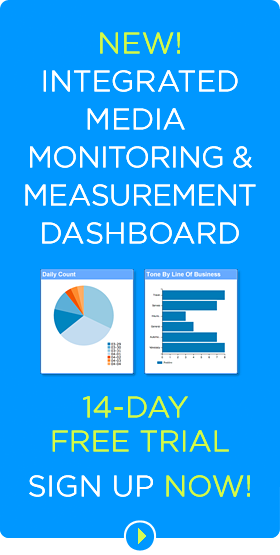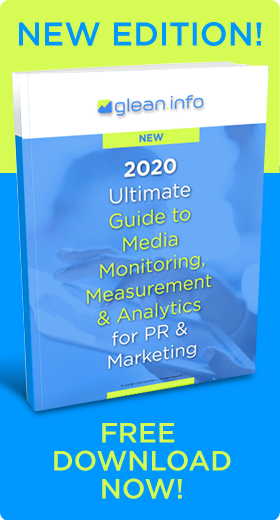By Aaron Gray
Emotional targeting can substantially increase conversions and sales. Appealing to your audience’s emotions allows your business to connect with them on a deeper, more meaningful level.
Arousing an emotional response triggers your visitors to become buying customers. The more emotions you trigger, the more leads you produce. If you’re new to emotional targeting, the following guide shows ways to convert more leads with emotional triggers.
How to Elicit Emotions from Your Audience
Step 1 – Use Fascination Triggers
 For any business, one key way to trigger emotions in your audience is to create fascination in your company and its products. Fascination brings mystery, excitement, passion and urgency to your business. To create fascination, you need to be creative. Start by asking an interesting and juicy question that begs for an answer. For example, an ad that asks: “Should Your Data Belong to the NSA?” leaves you wanting an answer:
For any business, one key way to trigger emotions in your audience is to create fascination in your company and its products. Fascination brings mystery, excitement, passion and urgency to your business. To create fascination, you need to be creative. Start by asking an interesting and juicy question that begs for an answer. For example, an ad that asks: “Should Your Data Belong to the NSA?” leaves you wanting an answer:
- Who would propose such as question?
- Why should your data belong to the NSA?
- Who has created this?
This provokes fascination and peaks the interest of your audience. When answering the question, make sure you have a descriptive story, something that will tap into your audience’s senses and one that triggers passion and emotion. If you state any facts, support them with studies or other references. This will help to build a connection with your audience over time.
Step 2 – Match Emotional Focal Points with the Problem
Whether we like to admit it or not, we’re drawn to problems. They attract us, and also produce anxiety and stress. Although that can be troubling to your audience, it can be beneficial to your business. You need to go beyond just identifying the problem. You need to know what emotions it triggers in your audience.
 Most times, presenting a real problem will cause fear, alarm, inner conflict and a feeling of loss. The emotional connection to the problem is the trigger that you need to focus on. For your audience the alarm may start as what’s called apprehension. As the problem continues, it intensifies the emotions, which then leads to fear and maybe even terror and loss.
Most times, presenting a real problem will cause fear, alarm, inner conflict and a feeling of loss. The emotional connection to the problem is the trigger that you need to focus on. For your audience the alarm may start as what’s called apprehension. As the problem continues, it intensifies the emotions, which then leads to fear and maybe even terror and loss.
If you find a solution to their problem, in their eyes you will become their “saviour,” or their “lifeboat,” and they will remain thankful to you. They will tell others about your business and will continue to come to you to solve other problems. Remember, however, that the solution to their problem must mirror the problem in order for your audience to connect properly with you. Your solution must answer their question fully so they feel complete. An example is:
- The Problem – The customer’s business website has gone down.
- The Agitator – They didn’t know it was down for the past four hours until they hear about it from their irritated customers on social media who can’t access the site.
- The Solution – You can provide a service which instantly notifies them via their chosen contact method as soon as the site fails.
By knowing your audience and their problem, you can relieve their fears with the perfect strategies and solutions to solve their problem.
Step 3 – Triggering Emotion through Your Content
Writing content is a tricky business. To trigger emotion in your audience you need to write in a way that engages them. This builds a relationship between with your audience and promotes more sales, comments and subscriptions. Your audience’s trust and interest will continue to grow through the use of emotionally targeted content.
When writing content, aim to prompt your audience to respond with a silent “yes.” When your audience is engaged with what you have to say through your content, they will think:
- Yes, I like this. I want to know more.
- Yes, I can really relate to this. It’s like they know me inside and out.
- Yes, I understand what you’re saying.
 While aiming for engagement from your audience is a key goal, pushing too fast and hard may cause a negative reaction. Post a few resonating pieces first to build a stronger relationship with your audience. Once the relationship is strong and your readership is large, you can then encourage them to sign up or buy something. When reading your content, your reader wants to know what they will get out of it, if you’re looking out for them, and whether you understand their problem. The more you connect through your content, the more engagement and leads you will create. This in turn will promote more conversions and sales.
While aiming for engagement from your audience is a key goal, pushing too fast and hard may cause a negative reaction. Post a few resonating pieces first to build a stronger relationship with your audience. Once the relationship is strong and your readership is large, you can then encourage them to sign up or buy something. When reading your content, your reader wants to know what they will get out of it, if you’re looking out for them, and whether you understand their problem. The more you connect through your content, the more engagement and leads you will create. This in turn will promote more conversions and sales.
Step 4 – Share Relevant Stories or Relatable Content
Sharing a familiar story or a relatable piece of content can trigger emotions. Your story can make your audience feel safe and show them that you understand their situation. Connect with your audience by relating a tragedy, inspiring story, or the challenges of life. Charities frequently use relatable content to evoke people to donate — and the strategy works.
Generating emotion from your audience doesn’t always come quickly or easily. It takes time and energy to find the triggers and stories that work best. When you find the best triggers, work on creating a marketing strategy that best suits your business and consider changes to your marketing campaign.
Bottom Line: Tapping into your customers’ emotions in your marketing and educational communications can produce a special connection to your business that stimulates them to remember you and to do business with you.





